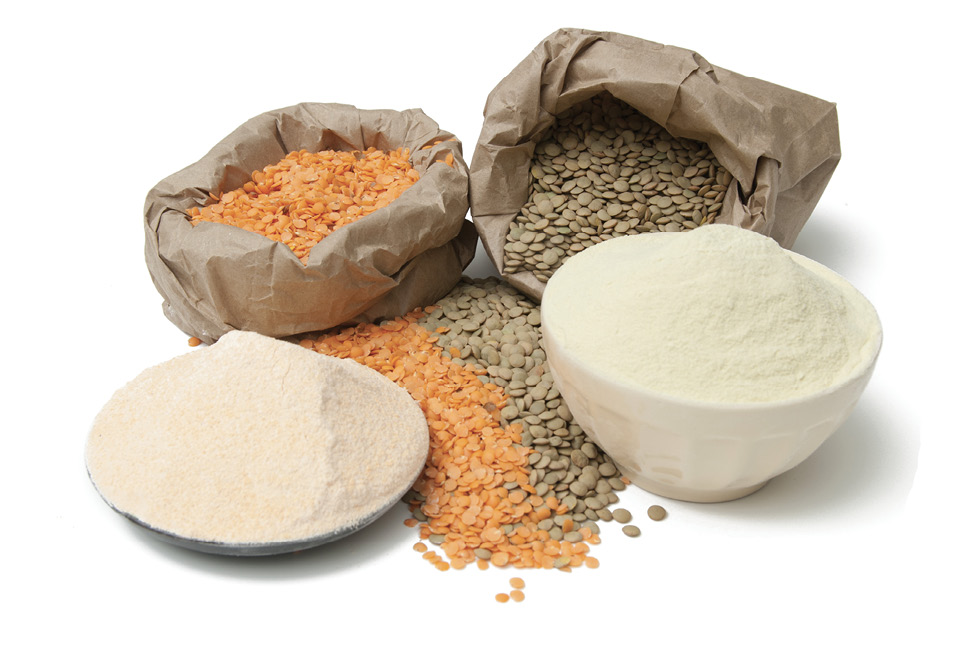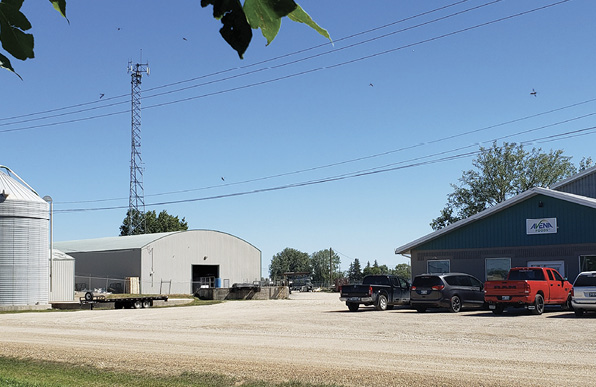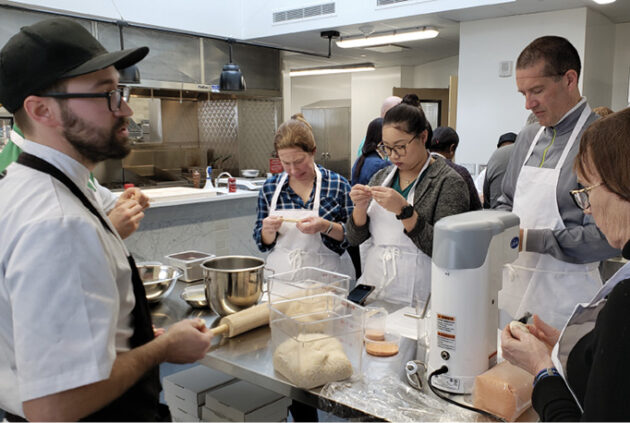
Tempered oat & pulse flours – feature story from the new edition of ‘Food in Canada’
Food in Canada Staff
Products Bake & Snack Food Plant-based foods avena Protein Industries Canada
Canada is known for many food products — poutine, maple syrup and much more — but if Protein Industries Canada (PIC) and many companies have their way, Canada will soon be renowned for its plant-based protein products (and ingredients as well).
Specifically, PIC recently made a $6.3 million investment in a new consortium that will work to better understand pulse flours as functional ingredients and develop new products containing these flours. This project is the fourteenth funded by PIC since it was created several years ago. Together with industry, PIC has committed more than $272 million to the Canadian plant-protein sector, and it’s currently accepting Expressions of Interest for research and capacity-building projects as part of its third open call.

Protein Industries Canada (CNW Group/Protein Industries Canada)
During this project, Avena Foods Ltd. and its partners will research which pulse crop varieties are best in terms of flour functionality, processing methods and product formulation. Big Mountain Foods and Daiya Foods, both based in Vancouver B.C., will use the flours in new products for both North American and overseas markets. Bakenology and The Village Bakery, both based in the United Kingdom, will make products to be shipped across Europe.
The significance of having international partners in this project and other projects is “very important,” according to PIC CEO Bill Greuel. “In Western Canada, we export 90 per cent of our agricultural production, and export partners and international markets are critical. Building in those relationships from the start, so that Canadian businesses have direct access to international clients for our ingredients and products, is key. This helps us not only increase use and demand for our products, but also helps build Canada’s brand as the preferred supplier of plant-based ingredients and food.”
Indeed, international competition in plant-based protein is growing, says Greuel. “Canada has an advantage in that we are already an established grower of high-protein crops, like peas and lentils, and Canada is well-respected as a commodity supplier, but we are seeing more and more countries such as France and Singapore invest into plant-based protein as well,” he explains. “Canada is well positioned to meet the global demand for plant protein, but we must maintain our momentum.”
THE NEW FLOURS
The flours involved in this project are processed by Avena from oats and whole pulses (lentils, chickpeas, peas and a variety of beans) through processes the company has refined over time. Various samples are currently being shipped to PIC consortium partners for testing and experimentation. Two research centers in Manitoba are also doing testing: the Prairie Research Kitchen of Red River College in Winnipeg, and the Manitoba Food Development Center in Portage la Prairie.

“Avena is also working with the University of Saskatchewan to characterize and compare the physiochemical and functional properties of raw versus tempered flours,” says Avena Foods CEO Gord Flaten. “Results will show the benefits of tempering various pulse types using different processing conditions. Feedback from consortium partners and research centers will help determine if processing changes are needed and identify which pulse types have the greatest functional potential in specific applications.” A new production line is also under construction at Avena’s Portage la Prairie pulse facility.
HUGE POTENTIAL
The applications for these high-protein flours span a very wide range — from egg replacement in baked goods, gluten-free bread and vegan mayonnaise, to dairy alternative products, extruded snacks, confectionary, pasta and plant-based “meat,” to soups, sauces and dressings, baby food and flavourings.
A great deal of research and testing is required, however, because these flours don’t act like traditional flours. And while those at Daiya and Big Mountain can’t share everything with Food in Canada because much is proprietary, they can share a little about the specific challenges that must be overcome, the knowledge gaps and what types of products they are focusing on.
Paul Wong, Daiya Foods chief innovation officer, explains that how the texture, flavour, and microbial/organoleptic qualities of these novel flours react over time is as yet unknown. This will all be investigated in order to use the flours in new Daiya products that might include gluten-free baked goods, as well as perhaps current products.

For its part, Big Mountain Foods is going to test the flours in a variety of applications such as baked goods, meat alternatives, sauces and dressings, comparing them to more traditional ingredients. Vice-president Jasmine Byrne explains “we cannot release exactly what type of products we will be launching, but we can say the pulse-based egg replacement is a key ingredient to creating meat alternatives… (and could also be used in) vegan baked goods.”
FUTURE FOR EXPORT AND MORE
While it’s hard for Greuel or anyone else to put a value on expected export sales of Canadian plant-based ingredients in the coming years, Greuel says the global plant-based market might exceed $100 billion by 2030. “To meet that demand will require tens of million tonnes of crop,” he notes. “That bodes well for Canada.”
In 2021, PIC expects another six to eight projects to move through its pipeline. “As for the top goals for PIC, I think a lot of it comes down to taking what we have learned over the last two years, building on it and keeping the momentum going,” says Greuel. “As we better understand the global market and the Canadian ecosystem, I feel we really know much more about the opportunity that’s in front of us and better understand what needs to be done to seize it. For me, that includes rolling out a plan for the sector. We need to communicate what we have learned and equip our members with the tools and resources to achieve it.”
Besides an industry plan, PIC is also focussing on how to scale up processing to ensure Canada’s ingredient-manufacturing facilities can meet global demand. This will require collaboration to attract investment, in Greuel’s view. “While it’s difficult to put an exact number on it, I would say that the capital required to process an additional 20 per cent of our crop production is measured in the tens of billions of dollars,” he explains. “Plant protein is still relatively new and we are still in the process of scaling up. We think we have an opportunity to take a large, if not majority, share of that global market. We have the raw commodities, we need to scale up processing capacity and there is a highly-positive economic case to do that. We do know that by increasing the amount of processing we do here at home by even 20 per cent, that will lead to an additional $12 billion for Canada’s economy every year, and as we continue to grow the Canadian ecosystem, we create a stronger sector here in Canada that creates new opportunities and new jobs for Canadians.”
Greuel also believes PIC has a responsibility to drive change, foster collaboration and promote innovation. “We need to make sure that people understand the vision and opportunity, and influence and mobilize the sector to achieve it,” he says. “PIC can help to create the conditions in Canada to make a competitive and sustainable business environment. This means working to make changes to our regulatory system to attract capital, help make connections with clients and markets, support the development of a global brand, and more.” 
— BY TREENA HEIN

Print this page